1
Understanding the Need for Sustainable Design
On my first Boy Scout trip, in the mid-1950s, I learned the basic environmental principle that we should leave the campsite as we found it. We were told that the next group of hikers deserved no less and that in fact we should clean the site up if those before us had been careless. I did not as a child understand that the campsite would be global or that the next hikers would include unborn generations.
—John Sitter
- Learning Objective 1: Discuss the concept of designing for benefit rather than austerity.
- Learning Objective 2: Apply sustainable design concepts to kitchen and bath projects.
- Learning Objective 3: Identify the basic needs for applying sustainable practices.
Our world is in dire straits; human impact on the earth is affecting the future of the planet (see Figure 1.1). Consider these facts:
- The average temperature of the earth has risen by more than 1.4° F over the last century.1
- Oceans are warming and becoming more acidic, ice caps are melting, and sea levels are rising.2 From 1880 to 2011, the average sea level rise was 0.07 inches per year, but from 1993 to 2011, the sea level rise was between 0.11 and 0.13 inches per year.3
- Emissions of greenhouse gases (carbon dioxide [CO2], methane, nitrous oxide, and fluorinated gases) have increased due to human activities such as:
- The burning of fossil fuels.
- Anaerobic decay of organic waste in landfills due to industry processes and commercial and household chemicals (see Figure 1.2)
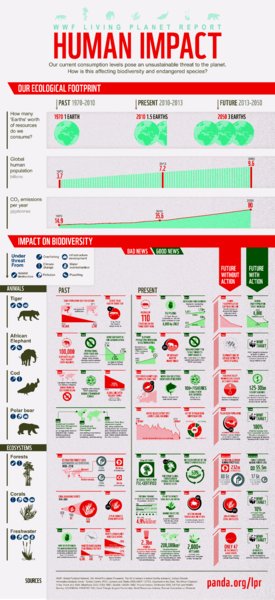
Figure 1.1 World Wildlife Fund Living Planet Report © 2014
World Wildlife Fund, www.panda.org
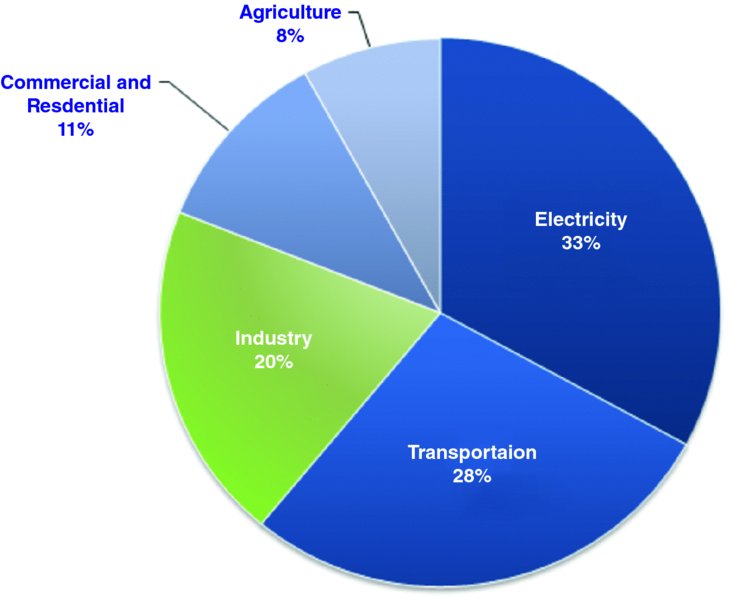
Figure 1.2 Total US Greenhouse Gas Emissions by Economic Sector in 2011
www.epa.gov/climatechange/ghgemissions/usinventoryreport.html
Global warming or climate change occurs when the greenhouse gases redirect too much radiation toward the earth. Radiant energy, in the form of heat, comes from the sun. In a most amazing natural cycle, unnecessary (and potentially harmful) radiant energy is sent out of the earth's atmosphere into space. With the exponential increase in the amount of greenhouse gases in the earth's atmosphere over the last 150 years, this process is being interrupted. The gases are trapping the energy as heat (see Figure 1.3).

Figure 1.3 The Greenhouse Effect
www.epa.gov/climatestudents/basics/today/greenhouse-effect.html
The term “greenhouse gas” is a blanket term for compounds that exacerbate this situation. These gases are by-products of industry. Waste emissions from the burning of fossil fuels are the leading source of these gases, but they are not completely responsible. Other sources of greenhouse gas include the manufacture of hydrofluorocarbons (refrigerants), emissions from landfills, emissions from livestock, and off-gassing of chemicals.
The construction industry has only added to our current problem. Research shows that the construction industry impacts our global problem with residential buildings accounting for:
- 38.9 percent of total US energy consumption
- 38.9 percent of total US CO2 emissions
- 13 percent of total US water consumption4
TRIPLE-BOTTOM-LINE APPROACH
We can answer the question “Why sustainable design?” with inspiration from the triple-bottom-line (TBL) concept (see Figure 1.4). This book is written in what appears to be the end stages of the worst economic crisis (recession) since the twentieth century's Great Depression. It is an exciting time. With the kitchen and bath remodeling sector experiencing a return to business growth, there is an opportunity to make this return to prosperity a green one. How do things look different now from four years ago? How will they look four years from today? The conversation about sustainable building, design, and remodeling practices is an evolving one.
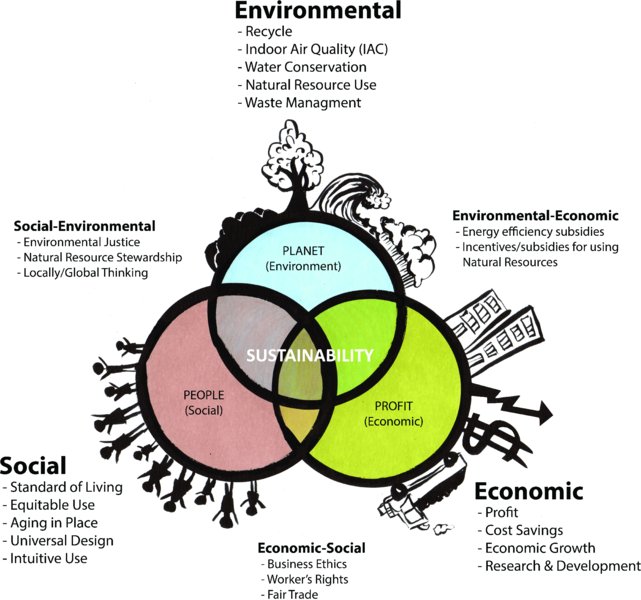
Figure 1.4 The main parts of the triple bottom line are people, planet, and profit, but as this figure shows, there are subsets that further define the TBL.
NKBA
At the end of the twentieth century, many companies were profiting at the expense of many workers and the natural environment. People, planet, profit is a business concept also known as the triple bottom line (TBL).
The term “TBL” first was used in 1994 by economist John Elkington. At the time, it was a revolutionary approach to business as usual. The TBL asks that businesses create three sectors with measureable outcomes to determine the success of the company. It states that it is not enough simply to look at the final success (profit) of the company as the one bottom line; one must also look at how the business affects the environment (planet) and how the business supports its community (people).
In this book, we examine ways to create sustainable kitchens and baths by understanding the need to become a steward of the environment. Creating a sustainable design practice means planning for benefit: saving your client money, paying homage to the environment, and designing healthy interiors that will enhance your clients' lives.
Event-Oriented Thinking, Systems Thinking, and the Butterfly Effect
There are a thousand hacking at the branches of evil to one who is striking at the root.
—Henry David Thoreau, Walden
The environment is a big issue—one country, one government, one community, one business, or one person cannot resolve all the issues, but if each one of us does our part, then change will occur. It will take a new way of thinking—a paradigm shift.
To make a paradigm shift, we must look at our attitudes, behaviors, and beliefs. This is not a linear process; it is a loop. Let's look at this in a different way:
Midterms are fast approaching, and you are getting a cold. Your homework is piling up, but there is a party this weekend, so you take cold medicine and head out. You spend the next three nights pulling all-nighters, take your midterms, and spend the next few days in bed very sick (see Figure 1.5).
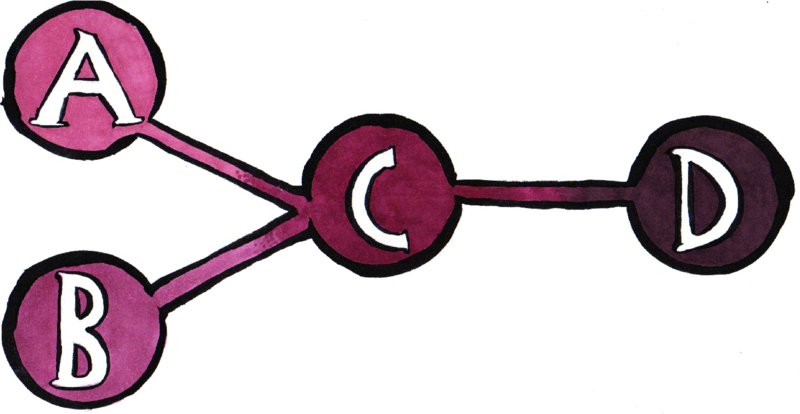
Figure 1.5 Event-oriented thinking says that everything can be explained by a chain of events: If A or B happens, then C will most likely occur—cause and effect.
NKBA
This is event-oriented thinking. This process looks at the world in a linear fashion: A happens, then B, then C. Event-oriented thinking assumes that each event has a cause and that changing the cause will correspondingly change the event. The rest of the system that produced the event need not be considered.
We can't solve problems by using the same kind of thinking we used when we created them.
—Albert Einstein
Now let's look at your cold in a new way.
Midterms are fast approaching, and you are getting a cold. After a few days of being miserable, you start thinking, “I seem to get a cold close to midterms often. Why is that?” You are recognizing a pattern. So, what happens at midterms each time? Well, the amount of work is beginning to pile up, but you are still going out with your friends on Friday and Saturday, not eating well, and your exercise regime has gone by the wayside. Now you are seeing what is influencing the pattern. To make a change, you need to make a shift. What can you do to break the pattern? Perhaps you can only go out on Saturday if all your studying is done, plan your meals in advance, get a workout partner, and focus on your health.
You are on your way to break the cycle. This is systems thinking (see Figure 1.6).

Figure 1.6 Systems thinking: To solve a problem, you need to assess what is happening at the base.
NKBA
System thinking is the process of looking at things as interdependent systems where one part influences another. Event-oriented thinking is linear cause and effect, but systems thinking is circular (a causal loop). Systems thinking is not reacting to a problem; rather, it encourages a more holistic approach to solutions.
The metaphor of the butterfly effect illustrates system thinking. A butterfly flaps its wings, and the small current has the ability to effect change as large as the path of a storm. The concept involves considering that small, almost imperceptible events can alter larger ones. It involves understanding that there is an interdependency of all events on the planet and that all circumstances are sensitive to one another. Much like the butterfly effect, systems thinking reasons that small events can be separated by time and distance and still affect one another.
This is the appropriate way to look at sustainability. Just changing your lamps to compact fluorescent bulbs (CFLs) or light-emitting diodes (LEDs) can be part of the solution; but as a designer, you have the opportunity to effect larger change. You can be part of the solution.
That's what this book is about—arming you with the knowledge and tools to effect change.
Imperceptible Change?
In a Pew Research poll conducted to determine Americans’ views on global warming, it was found that while 67 percent of the respondents believe there is “solid evidence” for climate change, only 30 percent consider it an issue that the president and congress should address.
Why?
It has been suggested that our inability to deal with this issue is due to the way our brain functions. Daniel Gilbert, a professor of psychology at Harvard, suggests that because “global warming doesn't take human form,” it is difficult for us to see it as an enemy. He further suggests that because global warming has occurred slowly, our minds have had time to normalize it.
In the ninteenth century, experiments were made using a frog and some water on the stove. If the frog was placed in uncomfortably warm water, it jumped out of the pan. However, if the frog was placed in a pan of cool water and the water was heated very slowly, it was believed that the frog would not notice the change in the water temperature until it was, sadly, too late.
This story has become a cultural metaphor for the inability of user groups to “see” or understand gradual change. People don't feel an urge to change their behavior until it is too late.
Even if you have not been incorporating any sustainable design practices in your business, you don't have to embrace all of the concepts we will be presenting at once. Instead, find a concept that resonates with you (e.g., indoor air quality, buying local, energy efficiency, recycled content, water efficiency), and start there.
The Myth of Apathy
Dr. Renee Lertzman is a consumer researcher who uses her background in psychology and communication to advise on green issues from a behavioral perspective. “The Myth of Apathy” is reprinted from Dr. Lertzman's Web site (http://reneelertzman.com/the-myth-of-apathy/) with her permission.
We reprint Dr. Lertzman's words here as a means of discussing how the subject of sustainable living can be conflictual. When faced with so many habits to change and so many activities to modify, it is easy to become overwhelmed. More specifically, many individuals choose to do little or nothing because they believe in the all-or-nothing approach. The perspective this book is offering is to do something. In terms of kitchen and bath design, it may be specifying an alternative to an old water heater or using a material that is sourced locally. The goal is a paradigm shift first; behavior changes will follow.
A Global Problem that Will Be Solved at the Local Level
Over 20 years ago, environmentalists recognized the need to address environmental destruction and the apparent climate change that was taking place. Because much of the destruction of the environment has to do with economic pressures, the International Council for Local Environmental Initiatives (now called ICLEI, Local Governments for Sustainability) was formed in 1990. The ICLEI believes that making positive changes to the environment will have more success if managed at a local level. The ICLEI has now grown to 14 offices in 84 countries. It is made up of 12 megacities, 100 supercities and urban regions, 450 large cities, and 450 small and medium-size cities and towns dedicated to sustainable development. The program set by the ICLEI varies by region to ensure that each local government is served according to its local needs.
Key points
- ICLEI is a nonprofit organization that helps local governments meet their self-defined sustainability, climate, and energy goals.
- ICLEI's tools, resources, and services help local governments save money, energy, and natural resources; create more livable communities; and address issues such as climate change.
- All ICLEI programs are voluntary, and often [they are] designed in collaboration with local governments.
- ICLEI does not seek to impose or mandate upon local governments any policies or initiatives, such as United Nations Agenda 21, the global environmental plan developed in 1992 at the UN Conference on Environment and Development—nor does ICLEI have any to do so.
- ICLEI is an independent nonprofit, and not part of the United Nations.5
The ICLEI works on initiatives to help small, local governments initiate programs that are designed to alter the path of climate change. One of the biggest subjects is local reduction of carbon. You may have noticed traffic lights being converted to LED, light-emitting diode, sources and city buses being fueled by bio-diesel or ethanol fuel. Many cities in the United States and around the world have signed up with programs to reduce their carbon production.
DESIGNING FOR BENEFIT
When the concept of sustainable design first became popular in the early 1990s, it was a “should”-based practice. Practitioners and their clients were “doing the right thing.” Consumers were being asked to “go without” decent water pressure in their showers, utilize funky-flushing toilets, and select from limited materials. Sustainable design was, quite frankly, a drag. After all, kitchen and bath remodels are supposed to be enjoyable projects. They add to life, they enrich the activities we do that are closest to our human experience: food preparation and nourishment, bathing, toileting, and self-care. Remodeling these areas of the home is costly. For many consumers, it involves using equity that they are relying on to move forward in life.
It was cavalier of the early sustainable design paradigm to ask consumers to do without while, in many cases, spending more. Times have changed, and today the perspective with which to view sustainable design practice is designing for benefit. A kitchen or bath remodel created using a foundation of best practices can ensure that your client will have projects that will:
- Save money on energy bills.
- Save money on water bills.
- Save money on long-lasting materials.
- Offset the cost of the project with incentives.
- Be free of chemicals that can cause health problems.
- Benefit the local building community and strengthen community.
The view now is win-win for both the client and the environment.
Concepts to Consider
Kitchen and bath remodeling impacts the environment. Designers should consider the following truths and think about learning how to diminish or improve them:
- Landfills are filled with construction and demotion waste.
- Carbon emissions from the transport of goods and services related to remodeling is adding to climate change.
- Carbon emissions from the manufacturing of materials have added to climate change and environmental problems.
- Extraction of raw elements from nature causes damage to the earth's surface.
- Clean water is becoming scarcer.
Until a few years ago, low-flow toilets (those using less than 1.6 gallons per flush) offered a feel-good incentive to clients who installed them. Unfortunately, they also offered reduced effectiveness. Which raises the question: what is the benefit of having a low-flow toilet if it must be flushed twice? Likewise, early versions of low-flow showerheads offered lower-quality showers. Such fixtures were not widely adopted. Even in areas with dwindling access to clean water, such as Phoenix, Arizona, or San Francisco, California, the discomfort of these water-saving devices made their use less than agreeable. Today, with new designs and technology, that has changed. Designers will have to communicate how these products have changed and improved with clients who may need convincing. One example is Kohler's low-flow toilet with updated technology that successfully flushes using 1.28 gallons of water.
The Problem with Carbon
In nature, the carbon cycle remains balanced. Decay from plant life releases carbon into soil while animals that eat the plant life release it in the form of CO2. In their photosynthesis process to create food for their survival, living plants use CO2 and release oxygen.
This would be the natural state of the carbon cycle were it not for human industry. Our use of fossil fuels for transportation, electricity, water purification, and agriculture means that too much carbon is being released into the environment.
An overabundance of CO2 in the atmosphere is the leading cause of what scientists call the greenhouse effect. CO2 reduces the atmosphere's ability to shield the earth's surface from radiation from the sun. This leads to rising temperatures and climate change that is unnatural for the planet.
When considering the impact of building and remodeling in relation to this unbalanced carbon cycle, we must look at what is used: new products (industry), trade of those products (transportation), and new appliances and systems (energy use).
The Problem with Landfill Waste
Currently, most residential construction waste is disposed of in a municipal solid waste landfill (MSWLF). In some states, these landfills are well maintained. In other areas, they are at capacity. Along with construction debris, these landfills also hold household waste, nonhazardous sludge, and industrial solid waste. Although they are regulated by the Environmental Protection Agency (EPA), these MSWLF, by their very nature, release immense amounts of methane gas into the atmosphere. The EPA is instituting measures to harness this gas. But such a mix of waste presents a serious problem. Many municipalities, such as Seattle, Washington, and Portland, Oregon, have taken measures to implement composting programs that will help to alleviate the amount of food waste in an MSWLF. The processing of that food waste to usable fertilizer helps to harness the embodied energy that remains in the waste.
The concept of embodied energy is important to understand. Every resource or manufactured object has embodied energy associated with it. Embodied energy is the sum of all the energy needed to source, create, and transport a good to where it is to be consumed. More often than not, there is embodied energy remaining after the good is removed or no longer in use. In order to prevent wasting that embodied energy, efforts should be made to recyle or reuse it.
Likewise, it is necessary to lessen the amount of construction and demolition (C&D) waste that makes its way to these landfills. According to the Deconstruction Institute, only 20 to 30 percent of C&D debris is recycled. C&D waste accounts for 30 percent of all solid waste in the United States (excluding road and transportation construction waste).
There are programs and incentives to help you reduce the impact of your clients' projects when it comes to C&D waste. This is discussed in detail in Chapter 3, “Sustainable Construction.”
Hazardous Materials
Until congress passed the clean air act of 1970, not many people thought about the presence of hazardous materials inside their homes. Asbestos was banned as an ingredient in many building materials such as floor paper and insulation. The use of lead-based paint was banned in 1978. When remodeling in homes built before theses safety measures, the designer must take precautions.
Kitchen and bath designers have it tough. As rewarding as it is to create, design, and execute on-trend, high-quality spaces, sometimes these designers have to walk a fine line. The profession is, by its nature, one that creates, uses energy, and builds anew. The kitchen and bath industry has played a significant role in national and local economies, and it is important that it continue to do so.
It is an outdated mind-set that equates sustainable building practices with harming the economy. What is required is a willingness to change outmoded habits and to embrace new ways of doing things. In many municipalities, this approach is compulsory due to the implementation of new energy codes.
Designing for All Abilities
When considering how important the triple bottom line is to creating a balanced approach to sustainability, industry, and people, you also have to consider universal design. The Rio Charter on Universal Design, drafted in 2004, calls for inclusive design as a characteristic of environmentally conscious design.
The most numerous generation of the twentieth century in the United States and Canada, the Baby Boomer generation, began turning 55 in 2001. The United States census shows 76 million births between 1945 and 1962. The generation is sometimes characterized by a reimagining of tradition and a rejection of the social structure.
It makes sense, then, that independence is so important to members of this generation. The ability to stay in one's home has sparked a significant movement in interior design and remodeling: aging in place. To age in place, people need a supportive environment. Designers must learn how to create environments for clients who are older or have abilities that are not accommodated by the standard way of doing things. A custom kitchen and/or bath design is about a careful response to the needs and lifestyles of the users. A kitchen and bath designer understands the interior environment needs to accommodate users, not the other way around. This paradigm is the backbone of universal design. Universal design is composed of seven principles crafted to guide designers in creating supportive environments. We will focus on universal design and aging in place design because both perspectives are part of the sustainability movement: equality in use, planning for a longer span of time in the home, and being responsible for the safety of clients.
Being a Steward
What does it mean to be a steward of the environment? The life and work of sustainable design leader William McDonough is inspiring for any designer. In the early 1990s, McDonough took steps to create a new paradigm by which to evaluate the impact buildings and interior remodels have on the environment. McDonough's well-known book, Cradle to Cradle, explores the concept of complete recycling of building materials from structural members to carpet.6 McDonough takes his inspiration from nature: There is a closed-loop system. Whatever materials are created are absorbed by the earth. Of course, the presence of landfills and barges of garbage show us that this is far from the truth when it comes to human consumption. From McDonough's book, a cradle-to-cradle (C2C) rating system was developed to help people make choices based on care for the environment. For many consumers, a C2C label on materials adds to their desirability. C2C ratings let consumers and designers know the environmental impact of materials. This labeling means that the product has undergone considerable testing and consideration. It is a voluntary labeling practice. Designers can find more information at the organization's website: www.c2ccertified.org.
Code Compliance
Code compliance is an important part of new construction and renovation. New construction and remodeling projects are subject to energy code compliance at the federal, state, and local levels. Scottsdale, Arizona, recently adopted the 2012 Federal Energy Code as its local code and became the first city in the southwestern United States to do so.
This book outlines conservation of materials, water, and power through specific construction practices. Leadership in Energy and Environmental Design (LEED) is a rating process that covers the residential sector as well as the commercial sector. Administered by the US Green Building Council (USGBC), it has awarded various rating levels to buildings since 1998. It is a participatory program and not mandated, as building codes are. LEED awards are a major goal and achievement for many architects and developers. There is a LEED for homes award, which we focus on in Chapter 2.
Marketability
Studies show that green design sells real estate. It is an accepted concept that remodeled kitchens and bathrooms add to the overall value for a home or condominium. Green design means that the remodel was done with value in mind. Many real estate agents recognize that green design is a marketable asset. As described in “An Interview with Susanne Clark,” Suzanne Clark of the Suzanne Clark Group, a Keller Williams company, says her clients are looking for the values that green design showcases.
On the Horizon
The Appraisal Institute's Residential Green and Energy Efficient Addendum (Form 820.04) is available to aid in the evaluation of a home's overall appraisal value.7 It gives an appraiser the ability to create a report that includes a home's certification (e.g., ENERGY STAR); LEED status; rating on the Home Energy Rating System (HERS) Index (see Figure 1.7); and note energy-efficient windows, appliances, and fixtures. It creates a very complete narrative and record of improvements a homeowner has made to a home that increases its desirability. This is just one example of how green building is no longer on the fringe but is very much becoming a mainstream concept.
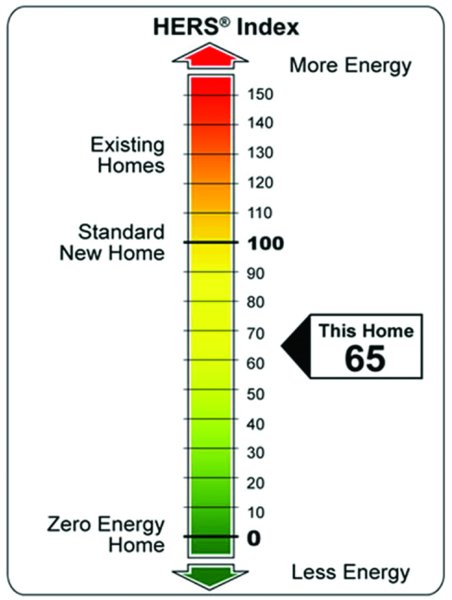
Figure 1.7 The HERS (Home Energy Rating System) Index measures the home's energy efficiency. It is the industry standard and nationally recognized for calculating a home's energy performance.
Image courtesy of RESNET, the Residential Energy Sources Network.
The introduction of the Sensible Accounting to Value Energy (SAVE) Act to Congress in June 2013 is a sign that energy efficiency and saving money go hand in hand. The SAVE Act calls for a home's energy report to be part of underwriting policy. It allows potential borrowers to submit a qualified home energy report (see Chapter 3 for information on RESNET, Residential Energy Sources Network, and the HERS Index of a home) as part of the qualification process for a mortgage. Any improvements made to a home's energy efficiency will be taken into account in the loan to value equation when a potential buyer applies for a mortgage. According to a white paper release on the SAVE Act, it is projected to create 83,000 jobs in the green building and upgrade sector and to save $1.1 billion in energy costs. Whether through the SAVE act or other future legislation, a home's energy efficiency will soon be rewarded with financing incentives.
Goals
The goal of this book is to educate kitchen and bath designers on how participate in environmental stewardship. Once a designer, a builder, or a design student becomes confident in his or her own knowledge, then they “pay it forward,” becoming agents of change as they design with an approach that includes preserving the environment.
To begin a dialogue on sustainable design, let's examine the four Rs of green design:
- Reduce
- Reuse
- Recycle
- Recover
Reduce
Construction Waste
According to the Institute for Local Self-Reliance, the construction and demolition industry in the United States creates 230 million tons of waste ever year. Much of this waste contains some reusable content. Likewise, some of the waste could be taken out of the landfill stream and recycled for its content. Careful deconstruction to remove building materials prior to a remodel and attentive construction techniques during construction are just two ways to reduce the amount of waste on a remodeling project.
Water and Energy Use
Helping clients choose to install ENERGY STAR–rated appliances and fixtures to diminish water use can result in lower bills for them. Some municipalities offer incentives for the installation these items. As a designer, learning to navigate these incentives and potentially getting rebates for clients will make you in high demand!
Reuse
Materials
Incorporating existing elements in your design or using building salvage are just two ways the reuse of materials (and thus, the saving of embodied energy) can work in a project.
Recycle
Material Content
Many materials now incorporate recycled content. In Chapter 5 “Materials,” we cover what this means and how to research a material's environmental impact through a third-part evaluator.
Recover
Construction Waste
Chapter 3 covers careful construction techniques to help you navigate decisions regarding building material salvage.
Best Practices
Many business models are created around the concept of best practices. There are lists of best practices in management, marketing, and education. The concept of a best practices approach to green design and sustainable project management means adhering to proven methods, methods that are aligned with the triple bottom line. By creating a guiding template of best practices, designers will serve their clients' interests, save energy and resources, reduce waste, and plan for longevity and accessibility, and will be ahead of the game with each project undertaken. Best practices is really design programming which the National Kitchen & Bath Association (NKBA) is known to promote. The NKBA's extensive intake forms for kitchen and bath design aid designers in understanding precisely what is needed and desired in a project.
A best practices approach will also aid designers to communicate this information to clients. The approach offers a simple structure that outlines systems, construction, material selection, and product specification for a green renovation. For an example of best practices in construction, see Chapter 3.
What was at one time an exercise in dichotomy is now a much more holistic approach to kitchen and bath design. One doesn't have to choose between sustainable design and affordability, or green design and luxury. The earlier conversation of good versus bad, with little consensus on what either one means to a project, has been replaced by a new comprehensive approach. The list of the four Rs of sustainable design leads to the valuable design concept of best practices. This concept empowers designers and clients to create a road map during the design process. Sustainability in remodeling projects must start from the beginning. Without a firm foundation of knowledge about sustainability, the process will seem overwhelming and potentially more expensive.
In this book, we cover ways to create a best practice framework for your design process from predesign programming to construction install and beyond.
SUMMARY
In a recent kitchen and bath planning class taught by author Robin Rigby Fisher, CMKBD, the environment became the topic of conversation. The students and I discussed our part in the problem. Many students said they were concerned that the kitchen and bath design field only adds to environmental issues and expressed that they had begun to doubt their chosen educational path.
Yes, a career in the design industry may not be seen as a sustainable one, but by gaining a thorough understanding of the problems, learning various options in construction and business practices, and developing an in-depth knowledge of materials and their maintenance issues, we can impact the environment for good.
We also discussed that with careful planning, good design, and specifying the appropriate materials and their maintenance, we can help to make our clients' lives easier. Good kitchen design creates rooms that bring families together, makes it easier to eat healthier, and creates rooms that are easier to clean. Designs that consider how clients will live in their home in the future by incorporating universal design standards minimize the need for later renovations and allow people to live in their homes longer. Choosing materials for quality (they don't always have to be the most expensive) create longer-lasting kitchens and bathrooms with less waste.
Our goal for this textbook is to provide a sound background of the sustainable design challenge and the tools needed to lessen our industry's negative impact on the environment.
We may not change the world, but we can make a positive difference.
REVIEW QUESTIONS
-
What is the triple bottom line? Sketch a diagram. (See “The Triple Bottom Line Approach” page 4)
-
How can the four Rs of sustainable design be applied to kitchen and bath design? (See “Goals” page 18)
-
What are the seven principles of universal design? (See “Universal Design for Sustainable and Inclusive Development” page 15)